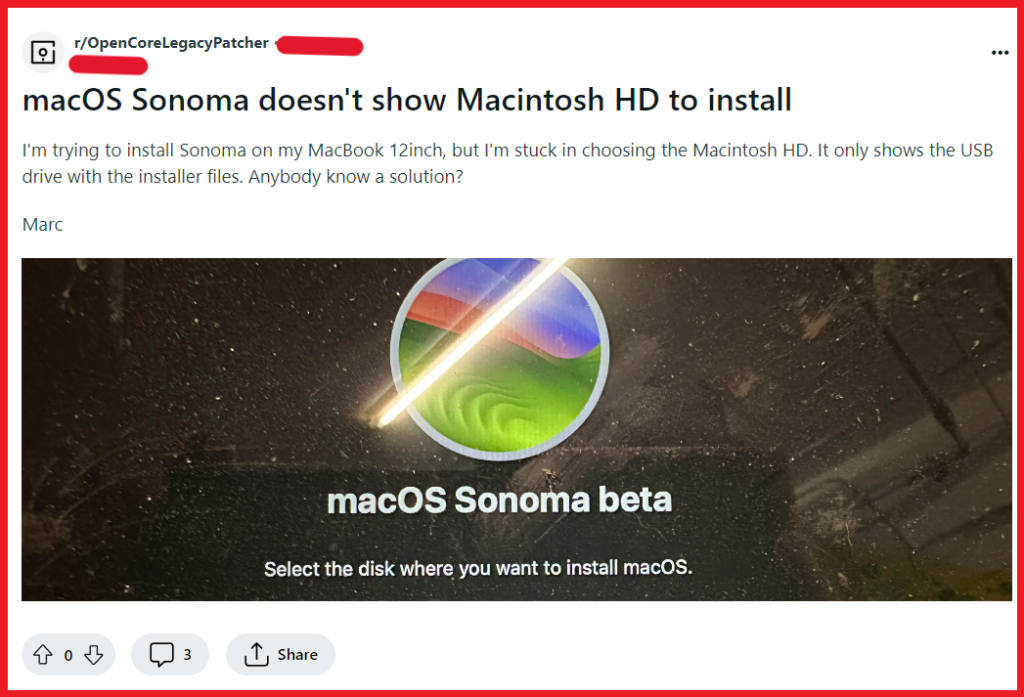Having trouble installing macOS Sonoma on your Macintosh HD? You’re not alone.
Many users encounter issues when attempting to install the latest macOS version.
Whether it’s due to insufficient storage space, download problems, or other issues, the frustration is real.
But fear not, as there are several effective fixes available to address this issue.
In this blog, we’ll explore some practical solutions to help you resolve the “macOS Sonoma cannot be installed on Macintosh HD” problem.
How To Fix MacOS Sonoma Cannot Be Installed On Macintosh HD?

To fix macOS Sonoma cannot be installed on Macintosh HD, you can ensure sufficient storage space, check the internet connection, and reset NVRAM or PRAM. Additionally, you can check compatibility, and create a bootable installer.
1. Ensure Sufficient Storage Space
The installation of macOS Sonoma often requires a significant amount of free space on your Macintosh HD.
Without enough space, the installation process cannot proceed, leading to errors or a failed installation.
- Check your current storage usage by clicking on the Apple menu > About This Mac > Storage.

- Uninstall unused applications by dragging them to the Trash or using an uninstaller.
- Delete large and unnecessary files or move them to an external drive.
- Empty your Trash and clear your cache to free up space.
2. Check Internet Connection
A stable internet connection is essential when downloading and installing macOS Sonoma, as interruptions can corrupt the installation files or cause the process to fail.
Ensuring a reliable connection can prevent these issues and facilitate a smooth installation.
- Verify your internet connection is active by opening a web browser and visiting a website.

- If you’re using Wi-Fi, try moving closer to the router for a stronger signal or consider using a wired Ethernet connection for improved stability.
- Temporarily disable any VPNs or network tools that might interfere with your connection.
3. Reset NVRAM Or PRAM
NVRAM (nonvolatile random-access memory) or PRAM (Parameter RAM) stores certain settings and can affect the installation process.
Resetting it can resolve issues that prevent macOS Sonoma from installing.
- Shut down your Mac.

- Turn on your Mac and immediately press and hold the Option, Command, P, and R keys together for about 20 seconds. Your Mac may appear to restart.
- Release the keys after the Apple logo appears and disappears for the second time.
4. Check Compatibility Of MacOS Sonoma
macOS Sonoma may not be compatible with all Mac models.
Installing an OS on an incompatible device can lead to performance issues or installation failure.
- Visit the Apple website to check the list of Mac models compatible with macOS Sonoma.

- If your Mac is not on the list, you may need to consider not upgrading or finding workarounds for unsupported Macs.
5. Create A Bootable Installer
If you’re still having trouble, creating a bootable installer for macOS Sonoma can be a reliable alternative method of installation. This allows you to perform a clean install of the OS.
- Download the macOS Sonoma installer from the Mac App Store.

- Connect a USB drive with at least 12GB of available storage.
- Open Terminal and use the createinstallmedia command with the appropriate path to your installer and USB drive. For example: sudo /Applications/Install\ macOS\ Sonoma.app/Contents/Resources/createinstallmedia –volume /Volumes/MyUSBDrive –nointeraction.
- Replace /Volumes/MyUSBDrive with the name of your USB drive.
- Wait for the process to complete, then restart your Mac while holding the Option key to select the bootable installer.
6. Update MacOS In Safe Mode
Installing macOS updates in Safe Mode can circumvent issues caused by third-party software or corrupted cache files.
Safe Mode performs certain checks and prevents some software from automatically loading or opening.
- Restart your Mac and immediately press and hold the Shift key until you see the login window.

- Log in to your Mac (you might need to log in more than once if FileVault is turned on).
- Attempt to install macOS Sonoma through the App Store or System Preferences.
7. Convert HFS+ To APFS
For macOS Sonoma to install properly, your Mac’s file system may need to be converted from HFS+ to APFS, which is optimized for SSDs and required for newer macOS versions.
This conversion is usually automatic during the installation, but if it doesn’t occur, it could prevent the installation from proceeding.
- Back up your Mac using Time Machine or another backup method before attempting any file system changes.
- Restart your Mac in Recovery Mode by pressing Command (⌘) + R during startup.
- Open Disk Utility from the macOS Utilities menu.
- Select your startup disk (usually named “Macintosh HD”) from the sidebar.
- Click on Erase, choose APFS from the format options, and proceed with the erasure.
- Once the drive is formatted to APFS, attempt to reinstall macOS Sonoma.
8. Contact Apple Support

If you’ve tried all the above steps and still encounter issues installing macOS Sonoma, it may be time to seek professional assistance.
- Visit the Apple Support website or use the Apple Support app to get in touch with a support representative.
- You can also schedule a Genius Bar appointment at your nearest Apple Store for hands-on help.
- Make sure to have your Mac’s serial number and a summary of the steps you’ve already attempted ready to provide to the support team.
